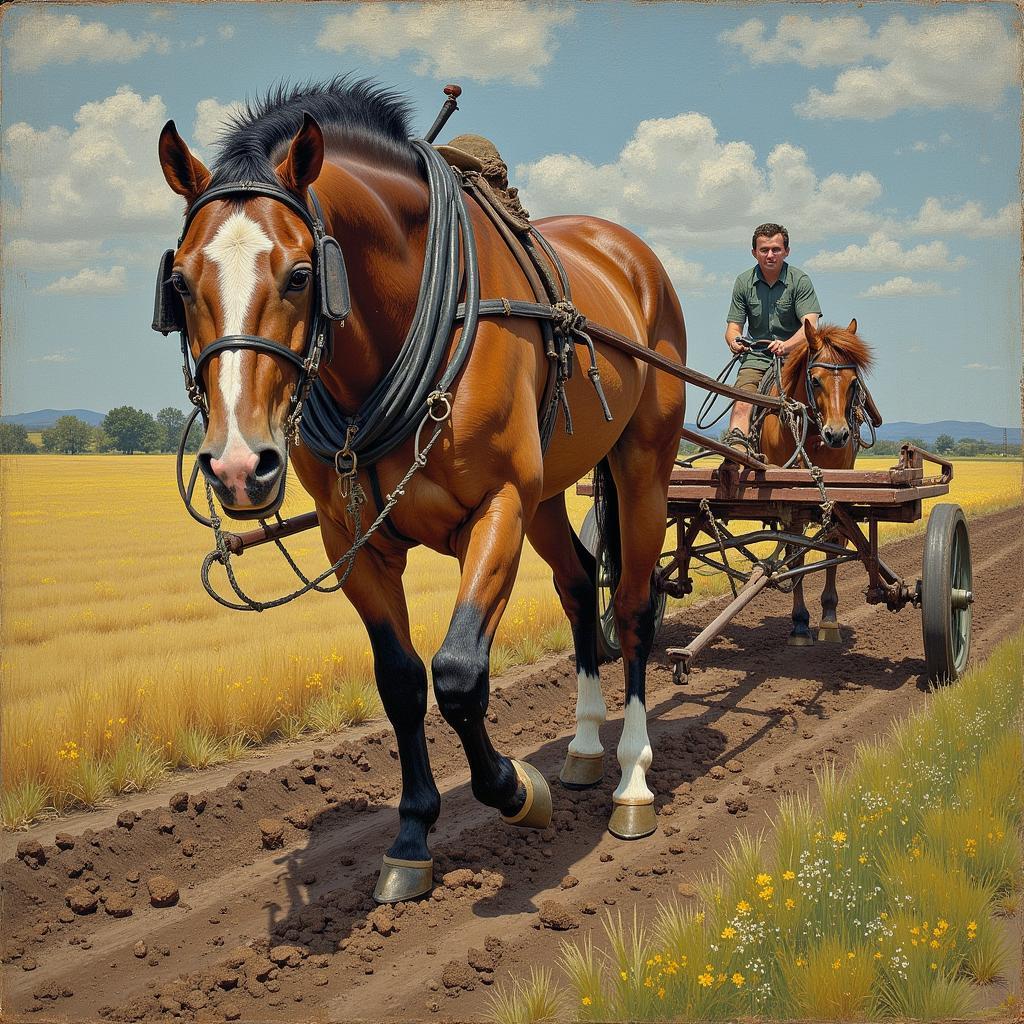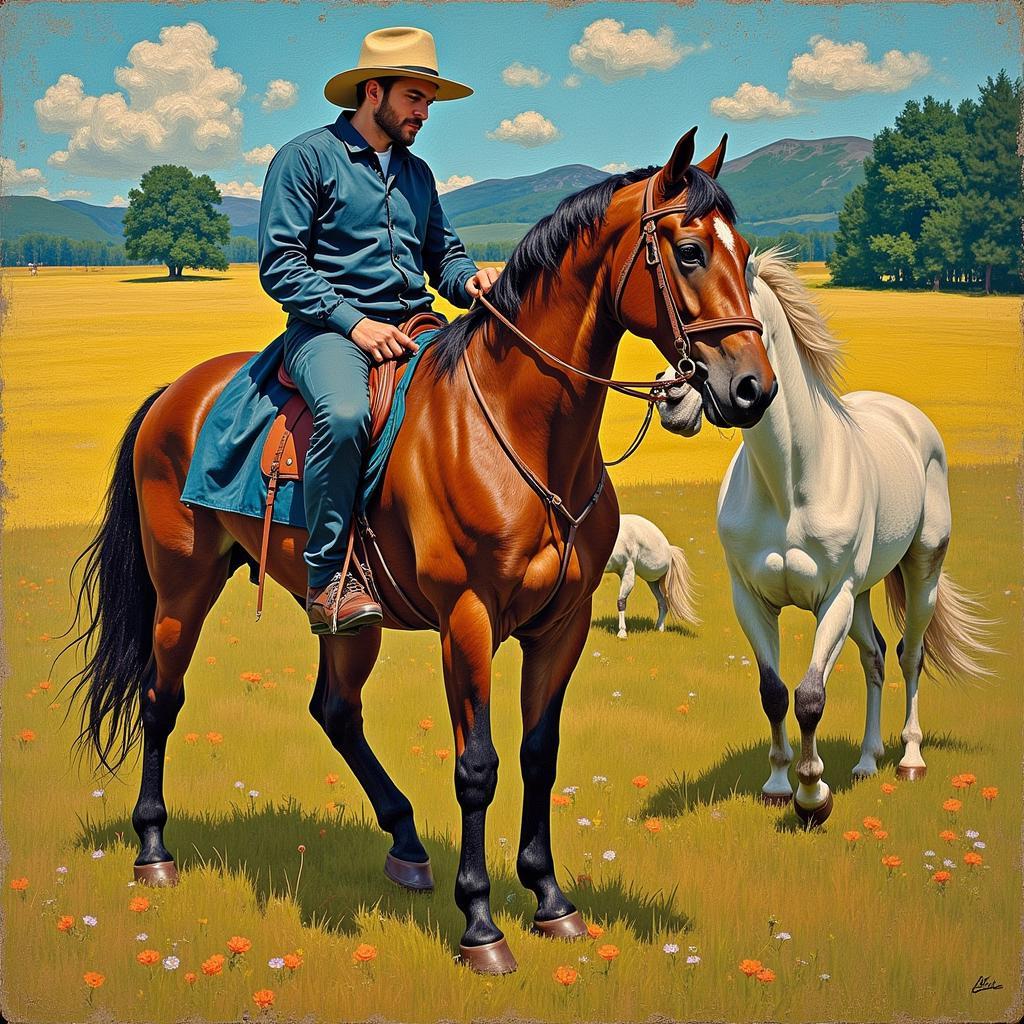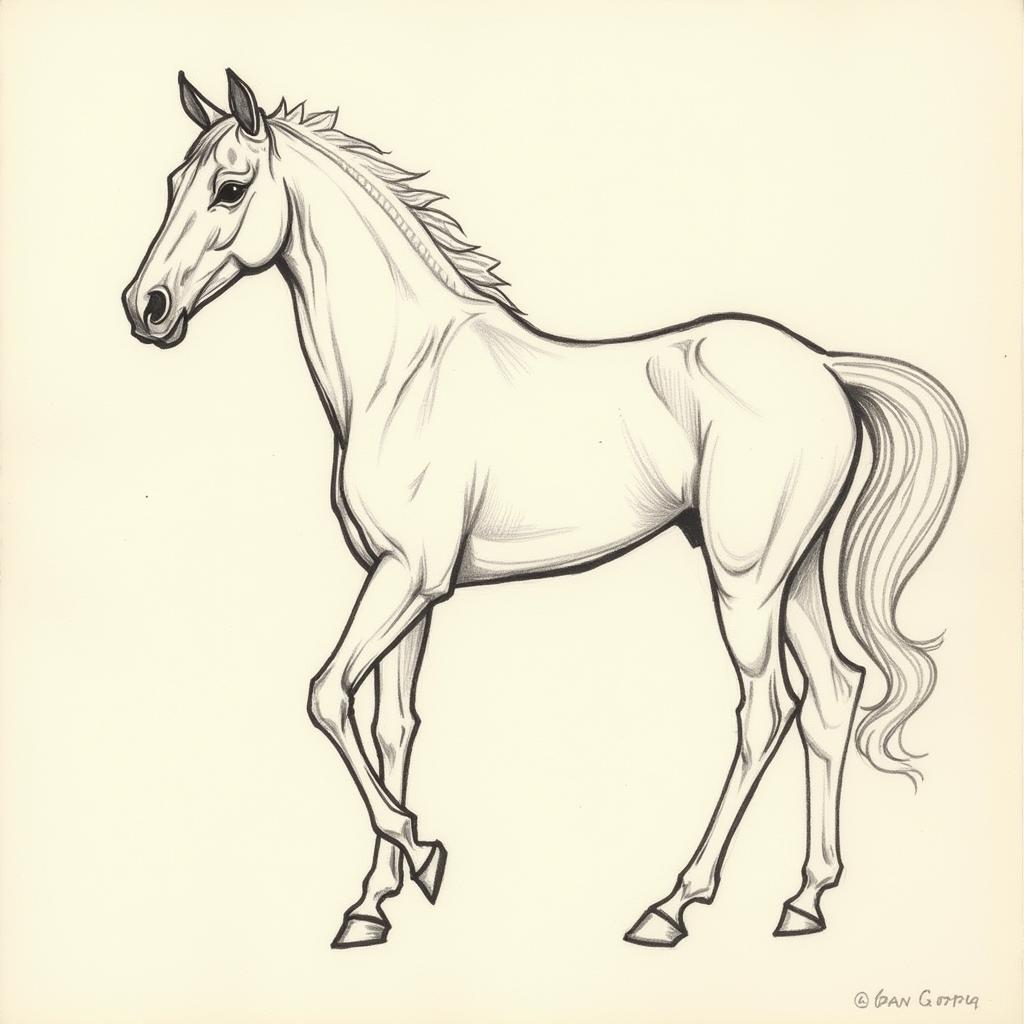Van Gogh Horse paintings offer a unique glimpse into the artist’s world, showcasing not only his artistic genius but also his fascination with the working animal. These powerful portrayals of horses, often depicting them in their everyday roles within rural life, go beyond mere representation and delve into the very essence of these magnificent creatures. From plough horses to riders, Van Gogh’s work captures the bond between humans and animals, reflecting the hardships and simple beauty of life in the late 19th century.
Delving into Van Gogh’s Equine Subjects
Van Gogh’s depictions of horses were not simply artistic exercises; they were reflections of the world around him. He often portrayed working horses, highlighting their strength and vital role in agriculture. Paintings like “The Plough and the Harrow” vividly illustrate this connection, showing the horse as an integral part of the rural landscape. His focus on these animals also reveals his empathy for the working class and the struggles of everyday life. He understood the importance of these animals, not just as subjects for his art, but as essential partners in the lives of the people he depicted.
 Van Gogh's Plough Horse Painting
Van Gogh's Plough Horse Painting
He wasn’t just interested in horses at work. Van Gogh also painted horses with riders, further exploring the relationship between humans and animals. These paintings often showcase a sense of movement and energy, capturing the dynamic interaction between horse and rider. “The Horseman” exemplifies this, portraying a rider in motion, suggesting a journey or a moment of action. This diversity in his equine subjects demonstrates Van Gogh’s keen observation and his desire to capture the full spectrum of equine life.
Understanding the Symbolism of the Van Gogh Horse
Beyond their literal representation, horses held symbolic significance in Van Gogh’s work. They represented strength, resilience, and the connection between humanity and nature. In a letter to his brother Theo, Van Gogh described his fascination with the horse’s power and its role in the cycle of life. This symbolic layer adds depth and complexity to his paintings, inviting viewers to explore the deeper meanings embedded within the imagery. The horses become more than just animals; they become metaphors for the human condition.
 Van Gogh's Horse Rider Painting
Van Gogh's Horse Rider Painting
The Artistic Techniques Behind Van Gogh’s Equine Masterpieces
Van Gogh’s distinct artistic style is evident in his portrayals of horses. His bold brushstrokes, vibrant colours, and expressive use of impasto give his equine subjects a unique energy and vitality. The thick application of paint adds texture and depth, creating a sense of three-dimensionality and bringing the horses to life on the canvas. He used colour not just to represent reality but to convey emotion and atmosphere, further enhancing the impact of his equine paintings.
Influences and Inspirations in Van Gogh’s Horse Paintings
Van Gogh was influenced by various artistic traditions, including Japanese woodblock prints and the works of artists like Jean-François Millet. These influences are visible in his depictions of horses, particularly in the simplified forms and bold outlines. He adapted these influences to create his own unique style, resulting in equine portrayals that are both powerful and deeply personal. He drew inspiration from the world around him, observing the horses of rural life and translating his observations into compelling works of art.
“Van Gogh was deeply connected to the natural world, and his horse paintings reflect this intimate relationship,” says Dr. Eleanor Ainsworth, art historian specializing in 19th-century European art. “He saw the horse as a symbol of strength and perseverance, qualities that resonated deeply with his own personal struggles.”
 Van Gogh's Horse Drawing
Van Gogh's Horse Drawing
The Legacy of Van Gogh’s Horses
Van Gogh’s horse paintings continue to captivate audiences today, offering a timeless glimpse into the world of a master artist. His unique artistic style and his profound understanding of his subjects have ensured that these paintings remain relevant and inspiring. They serve as a testament to his artistic genius and his enduring fascination with the equine world.
Conclusion
Van Gogh’s horse paintings are more than just beautiful works of art; they are a window into the artist’s soul and his profound connection to the world around him. From working horses toiling in the fields to riders embarking on journeys, these paintings capture the essence of equine life in the late 19th century. They are a testament to Van Gogh’s unique vision and his ability to find beauty and meaning in the everyday.
FAQ
- What inspired Van Gogh to paint horses? He was inspired by the working horses of rural life and their integral role in the agricultural landscape.
- What techniques did Van Gogh use in his horse paintings? He employed bold brushstrokes, vibrant colours, and impasto to bring his equine subjects to life.
- What is the symbolic meaning of horses in Van Gogh’s work? They often represent strength, resilience, and the connection between humanity and nature.
- Where can I see Van Gogh’s horse paintings? Many of his works are housed in museums around the world, including the Van Gogh Museum in Amsterdam.
- How many horse paintings did Van Gogh create? He created numerous works featuring horses, including paintings, drawings, and sketches.
Common Situations and Questions
- I want to understand the context of Van Gogh’s horse paintings. Consider the social and economic conditions of the time and Van Gogh’s personal circumstances.
- I’m looking for specific examples of Van Gogh’s horse paintings. Research works like “The Plough and the Harrow” and “The Horseman.”
Further Exploration
Explore other articles on our website about Van Gogh’s art and the portrayal of animals in art history.
Contact Us
For assistance, please contact us: Phone: 0772127271, Email: [email protected] Or visit us at: QGM2+WX2, Vị Trung, Vị Thuỷ, Hậu Giang, Việt Nam. We have a 24/7 customer service team.